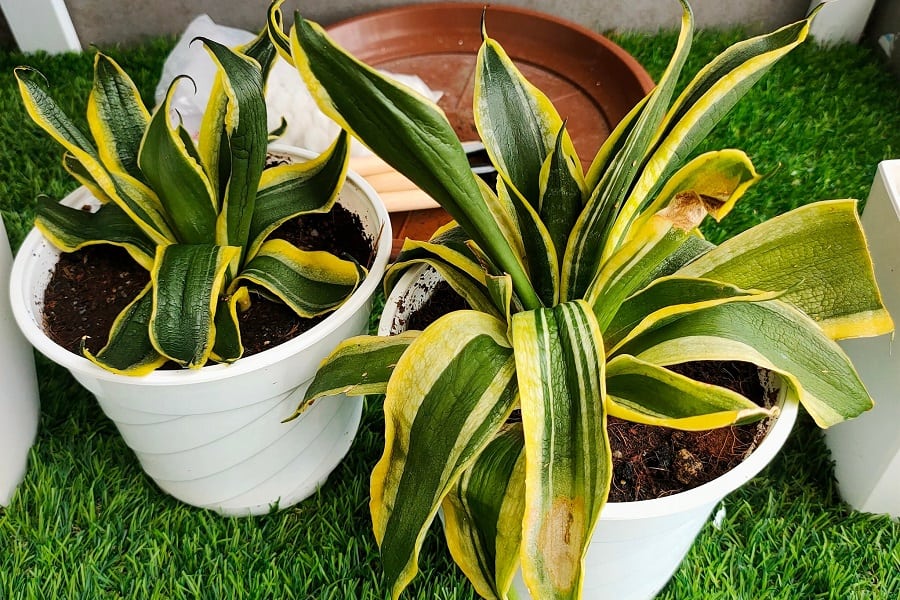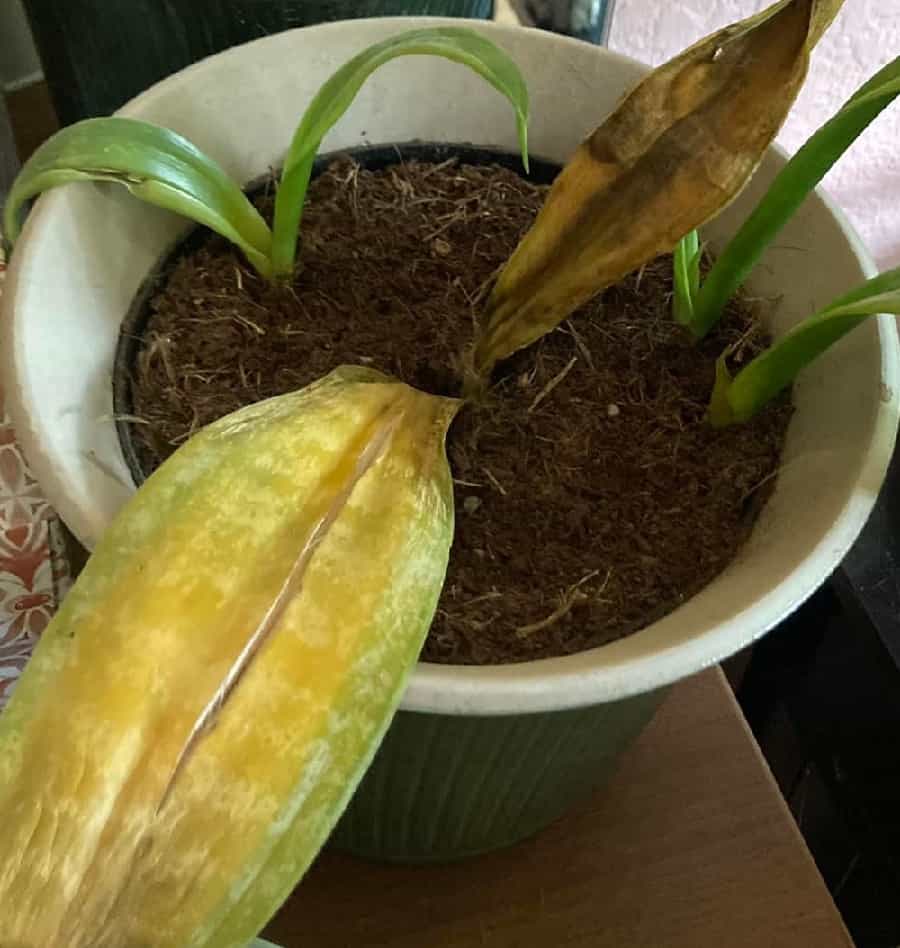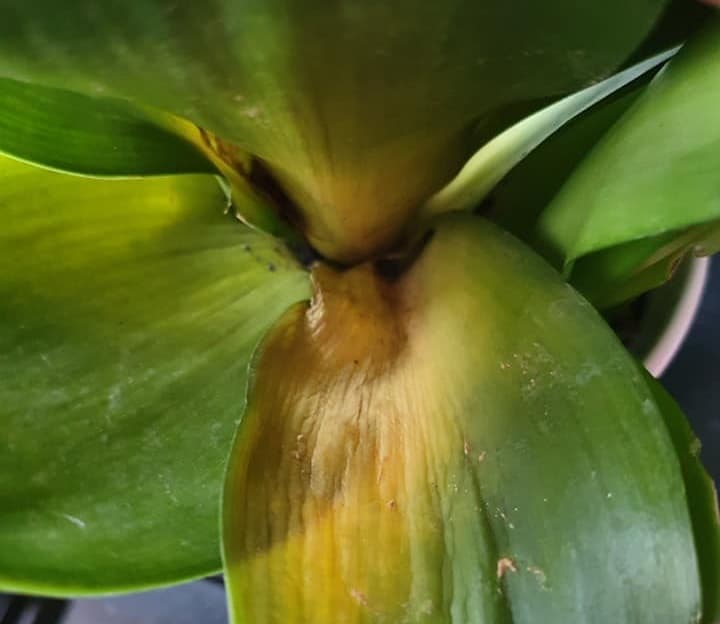Snake Plant Turning Yellow and Soft: 7 Causes and Solutions
Have you noticed your once proud and tall snake plant starting to look sad and droopy? If so, don’t worry, you’re not alone. It can be frustrating to see your beautiful ornamental snake plant turning yellow and feeling soft to the touch. But fear not! There are a few common reasons why this might be happening, and even better, there are solutions to bring your snake plant back to its former glory.
In this article, we’ll explore the causes behind the yellowing and softening of snake plants and provide you with practical and effective solutions to revive and maintain the health and beauty of your beloved plant. So, let’s dive in and discover how to rescue your snake plant from its current predicament!

Contents
Why Is My Snake Plant Turning Yellow and Soft?
When your snake plant’s leaves have yellow edges, it’s actually quite normal. However, when the entire surface of the leaf turns yellow, it’s a sign that something isn’t quite right. The yellowing of the leaves indicates that your plant is under stress and needs some extra care and attention.
The good news is that once you figure out the problem, you can fix it and bring your snake plant back to health. So, let’s take a look at some of the common causes of yellowing and softening snake plants and what you can do to solve them.
1. Overwatering
One of the common causes of snake plant leaves turning yellow is overwatering, which leads to excess moisture in the leaves.
Snake plants are like succulents and store water in their leaves. But if you give them too much water, the leaves can become soggy and change color. This happens when the soil is constantly wet and the roots are suffocating. To check if overwatering is the issue, gently remove your snake plant from the soil and inspect the roots. If they are soggy and smelly, root rot might be the culprit.
2. Excess Light Exposure
Just like humans, snake plants can get sunburned too! If your plant is exposed to direct sunlight for too long, especially during the scorching summer months, the leaves may start to curl and wrinkle up. You’ll notice that only the leaves facing the window will turn yellow.
3. Poor Drainage

Even if you’re watering your plant correctly, if the soil doesn’t drain well, the roots can become waterlogged. This leads to overwatering and yellowing of the leaves. Make sure your plant is potted in well-draining soil to prevent this issue.
4. Nutrient Deficiencies
Snake plants need the right nutrients to thrive. If the soil lacks essential nutrients like nitrogen, iron, or magnesium, it can cause the leaves to lose their green color and turn pale yellow. This is called chlorosis and indicates a nutrient deficiency.
5. Lower Temperatures
Snake plants prefer warm temperatures, between 70 and 90 degrees Fahrenheit. If they are exposed to prolonged periods of temperatures below 50 degrees Fahrenheit, it can stress the plant and cause yellowing. Keep your snake plant away from drafty windows during cold weather.
6. Root Rot

Soggy soil provides a haven for fungi that can attack your plant’s roots, causing rot. As the roots suffer, the leaves will develop yellow spots. To check for root rot, gently take out your snake plant from its pot and inspect the roots. If they are soft, smelly, and slimy, root rot has taken hold.
7. Over-Fertilization
Snake plants don’t require a lot of fertilizer. If you overfeed them, especially during the winter months, it can burn the plant and cause yellowing leaves. This disrupts nutrient absorption and makes the plant sensitive to cold temperatures. Young plants and recently repotted ones are especially susceptible.
Related Post:
10 Incredible Snake Plant Benefits Proven by Science
How Do You Save a Yellowing Snake Plant?
To rescue a yellowing snake plant, you need to tackle the root cause of the problem. By repotting the plant in a well-draining soil mix and providing optimal conditions for water, light, and temperature, you can bring your plant back to life and prevent salt build-up in the soil.
Let’s explore some effective ways to save your yellowing snake plant:
1. Water in Moderation
Giving your snake plant the right amount of water is crucial. Avoid watering if the top two inches of soil are still moist. Overwatering can worsen the condition. To revive the plant, wait for the soil to dry completely before watering. Aim to water once a week and always check the soil moisture before watering.
If your plant is in poorly draining soil, water it in the morning. This will enable better drainage due to sunlight and warmer temperatures during the day.
2. Ensure Proper Drainage
For good drainage, use a fast-draining potting mix and a container with drainage holes. A soil mix with coarse sand and perlite helps water flow away quickly. Before repotting, remove yellowing leaves and any rotting roots to improve the plant’s chances of recovery. For outdoor plants, spread coarse sand over the garden soil to enhance drainage.
3. Maintain the Ideal Temperature
Providing the right temperature environment for your snake plant is vital for its revival. If it’s in a greenhouse, maintain temperatures between 70 and 90 degrees Fahrenheit. Indoors, avoid placing the plant near cold drafts from AC vents, windows, or doorways.
4. Protect from Direct Sunlight
Too much direct sunlight can harm your snake plant. Move it to a shaded area or use window drapes to filter the light. If the plant is outdoors, place it next to taller plants to shield it from direct sunlight.
Related Post:
How Do You Straighten a Snake Plant?
5. Fertilize Properly
Avoid fertilizing your snake plant just before or during the winter months. During the warmer months, they benefit from additional nutrients. However, excessive fertilizer during cold temperatures can harm the roots and cause yellowing leaves. If you’ve already applied fertilizer, water the soil to wash away excess salts, giving the plant a chance to recover. If the plant suffers from nutrient deficiency (chlorosis), repot it in a cactus or succulent soil mix rich in the necessary minerals.
6. Treat Fungal Diseases
If you find soggy and foul-smelling roots, it indicates root rot that needs immediate treatment. Use a fungicide or hydrogen peroxide to eliminate pathogens causing root rot in the soil.
How Do You Revive a Mushy Snake Plant?
A mushy snake plant is not a pleasant sight, usually caused by fungal diseases due to overwatering. To revive it, start by pruning off the mushy leaves using clean, sterile shears. Remove all the affected leaves to give the plant a chance to recover.
Next, treat the fungal disease depending on its severity. There are natural and commercial options available for treatment. Ensure the soil is not waterlogged and use a well-draining soil mix to prevent future issues.
Choose pots made of materials like unsealed ceramics or terracotta that can absorb excess moisture if you accidentally overwater the plant. This will help prevent mushy leaves in the future.
Reviving a snake plant may take time and patience, but with the right care and treatment, your plant will regain its health and beauty once again.
Related Post:
5 Best Soils for Succulents in Pots
FAQs
Can yellow snake plant leaves turn green again?
No, yellow snake plant leaves cannot turn green again once they have reached that stage. Yellowing leaves are a sign of damage or stress, and once they have turned yellow, it indicates that the cells in the leaves have deteriorated and cannot regain their green color. It is important to address the underlying issues causing the yellowing and prevent further damage, but the already yellowed leaves will not revert back to green.
How do I know if my snake plant has root rot?
There are a few signs to look out for to determine if your snake plant has root rot. Gradually yellowing leaves that are mushy and saturated are indicators of root rot. Check for drooping, soft leaves, a soggy root system, and a foul odor emanating from the soil.
Can a snake plant recover from overwatering?
The recovery chances of a snake plant from overwatering depend on the severity of the issue. By following the instructions mentioned earlier to address overwatering, there is a good chance that your plant will recover well.
The Bottom Line
When the leaves of your snake plants turn yellow and soft, it’s usually due to improper care, such as overwatering or placing the plant in an unsuitable environment. By identifying the cause and implementing appropriate solutions, you can help your snake plant recover and thrive once again.
